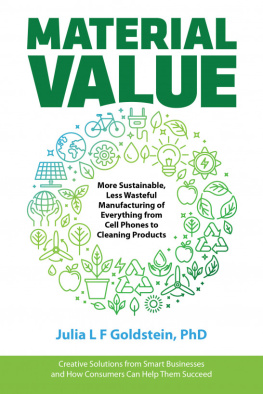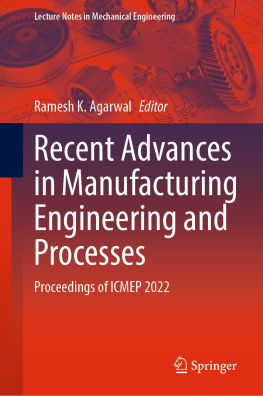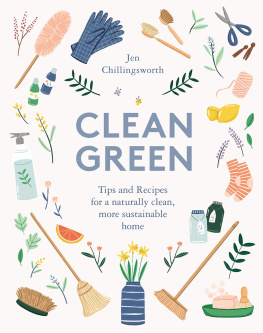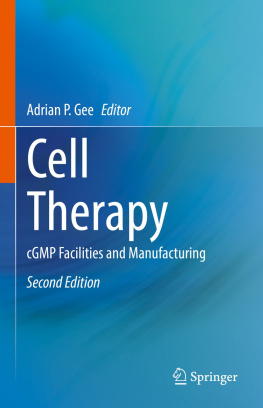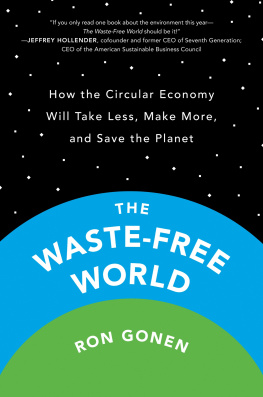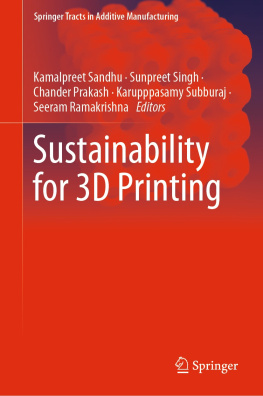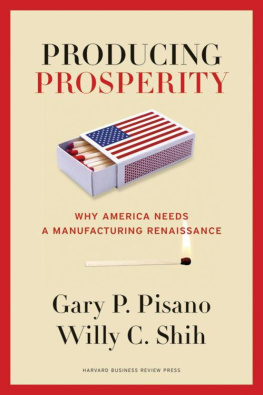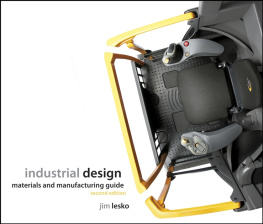Praise for MaterialValue
This book is an antidote toa world too dominated by extreme opinions: it is a detailed,balanced, and fascinating account of how we can make the modernmaterial world more sustainable. I particularly like the use ofcase studies that unravel the complexities and trade-offs needed tounderstand even seemingly obvious materials choices. MarkMiodownik, author of Stuff Matters andLiquid
Julia Goldstein has writtena comprehensive, comprehensible guide to the impact of everydaymaterials like plastics and metals. If you want to take informedactions to support a better world, read this book.Anne Janzer,author of Subscription Marketing and Writing to BeUnderstood
The clear explanations ofthe benefits and costs of so many types of modern materials, alongwith their current disposal methods, are valuable to anyoneinterested in moving our society toward a zero-waste future.JillLightner, author of Scraps, Peels, and Stems: Recipes and Tipsfor Rethinking Food Waste at Home
The writing style is easyto read, even for a non-technical, non-science, liberal arts majorlike me! It flows well, and the interviews help to support the keycontent points. I really enjoyed the book and learned quite alot.Steven Howard, author of Leadership Lessons from theVolkswagen Saga
How much have you thoughtabout the materials that go into the products you use every day? Inthis compelling and informative book, you will learn abouteverything from chemicals and plastics to manufacturing andrecycling, as well as what you can do as both a consumer andcitizen to make for a more sustainable material world, allexplained in a simple, clear, engaging style.David Biello, authorof The Unnatural World
MATERIAL VALUE: More Sustainable, Less WastefulManufacturing of Everything from Cell Phones to CleaningProducts
Julia L F Goldstein, PhD
Copyright 2019 by Julia L F Goldstein, PhD
Smashwords edition, Bebo Press, Redmond, WA
All rights reserved. No part of this publication may be reproduced, distributedor transmitted in any form or by any means without the prior written permission of the publisher, except in thecase of brief quotations embodied in critical reviews and certain other noncommercial uses permitted by copyright law. For permission requests, contact Bebo Press at
Cover design and interior typesetting:Alan Barnett
Interior graphics: Janine Milstrey
Editing: Ariel Hansen
Proofreading: Elaine Duncan
Indexing: Judi Gibbs
ISBN:978-0-9995956-1-9 (Paperback)
ISBN:978-0-9995956-2-6 (Hardcover)
ISBN: 978-0-9995956-3-3 (eBook)
LCCN: 2019901489
TABLE OF CONTENTS
Interview:
Interview:
Interview
Interviews:
Interview:
Interviews: )
Interviews:
Interviews:
Interviews:
Interviews:
INTRODUCTION
Why this book, and why now
As the federalgovernment in the US looks to dismantle many of the regulations around clean air, soil, and water that have been developed over the past fewdecades and businesses grapple with how to respond, we seem to beentering a new era. More and more, consumers want to know which chemicals and additives are in the products they buy and use, persuading various industries to become increasingly transparent abouttheir products and their manufacturing methods. Manufacturing companies are taking a closer look at their operations. All types of businesses are considering more carefully where to buy the products they need, from coffee cups to furniture. Businesses of all sizes are reconsidering their materials usage, waste streams, and carbonfootprints. However, some changes may be feel-good measures that do not make muchof a difference.
This is the perfect time to publish a book looking at sustainability through a lens of materials extraction, processing, use, and disposal. My journey, how ever, started long before I began writing this book.
I first became fascinated by materials sciencea field of engineering focused on materials selection,materials processing, and development ofnew materialsin college. I entered Harvey Mudd College in 1984 as a physics major. Second semester sophomore year I took a class calledModern Physics and realized that I didnt want to be a physics major. I wanted to study something more practical than quantum mechanics. I just wasnt driven to understand the world at that fundamental level.
Junior year, after switching my major to engineering, I took my first materials science course. Something about the idea of tailoring a materials physical properties by adding minute quantities of other materials or changing processing conditions fascinated me. And it didnt hurt that my professor, Joe King, was young and enthusiastic. He was brand new to teaching but had worked in industry for several years after earning his PhD. He brought that real-world experience to a failure analysis course he taught my senior year.
Professor King had served as an expert witness in product liability cases. His expertise in examining fracture surfaces to determine when and how a product had failed was considered extremely valuable to companies being sued. Many years later, I learned just how valuable such expertise can be when I did some research for a law firm on a patent infringement case and was paidwhat seemed to me to be an exorbitant hourly rate.
Back when I was in college, I didnt think much about the ethical implications of materials selection and designing new materials. This now strikes me as peculiar given the mission of Harvey Mudd College, which hasnt changed over the decades. As stated on its website, Harvey Mudd College seeks to educate engineers, scientists, and mathematicians well versed in all of these areas and in the humanities and the social sciences so that they may assume leadership in their fields with a clear understanding of the impact of their work on society.
I did, however, attend college in the 1980s, a decade not known for emphasizing environmentalism or social responsibility. That was for the hippies. My generation graduated with engineering degrees and pursued available job opportunities, many of which involved militarycontracts and required security clearances. The ethical and moral implications of their work just werent at the forefront of most of my peers minds as they pursued their careers.
I did think about product liability, given my exposure to failure analysis, and even took a course called Ethical Issues in Engineering when I wasworking on my MS in materials science at Stanford, but the sustainability piece hadnt occurred to me.Over the years, my perspective has shifted. I now believethat sustainable materials management is crucial. It needs to be addressed throughout the supply chain, from raw materials extraction through the entire life cycle of a manufactured product.
My voyage into materials toxicity began with my PhD research. One of Professor Bill Morriss students at University of California, Berkeley, hadbeen researching the effect of additions of small quantities of other metals on the properties of tin-lead solders. That student was graduating, so Professor Morris asked me to step in to continue the research, which I agreed to do.
Then, a chance comment from another student at a weekly research group meeting changed the course of my research and my career. She mentioned that the US Congress was considering a ban on tin-lead solders in electronics, with the goal of eliminating lead, a toxic element. I decided almost on the spot that I needed to research lead-free solders. Would these alloys exhibit the same microscopic changesthat tin-lead solders experienced when deformed at high temperature? I was curious.
The title of my PhD thesis, published in 1993, was Microstructural Development andMechanical Behavior of Eutectic Bismuth-Tin and Eutectic Indium-Tinin Response to High TemperatureDeformation. In some ways, I was ahead of my timeit would take more than a decade before the Restriction of Hazardous Substances Directive, known as RoHS, was adopted in the European Union (EU). RoHS restricts the use of six hazardous materials in electronics, including lead. In other ways, my research was completely irrelevant, as is the case for many PhD research projects. Neither of the alloysI studied is a suitable replacement for tin-lead solder. Their melting points are too low.
Next page
